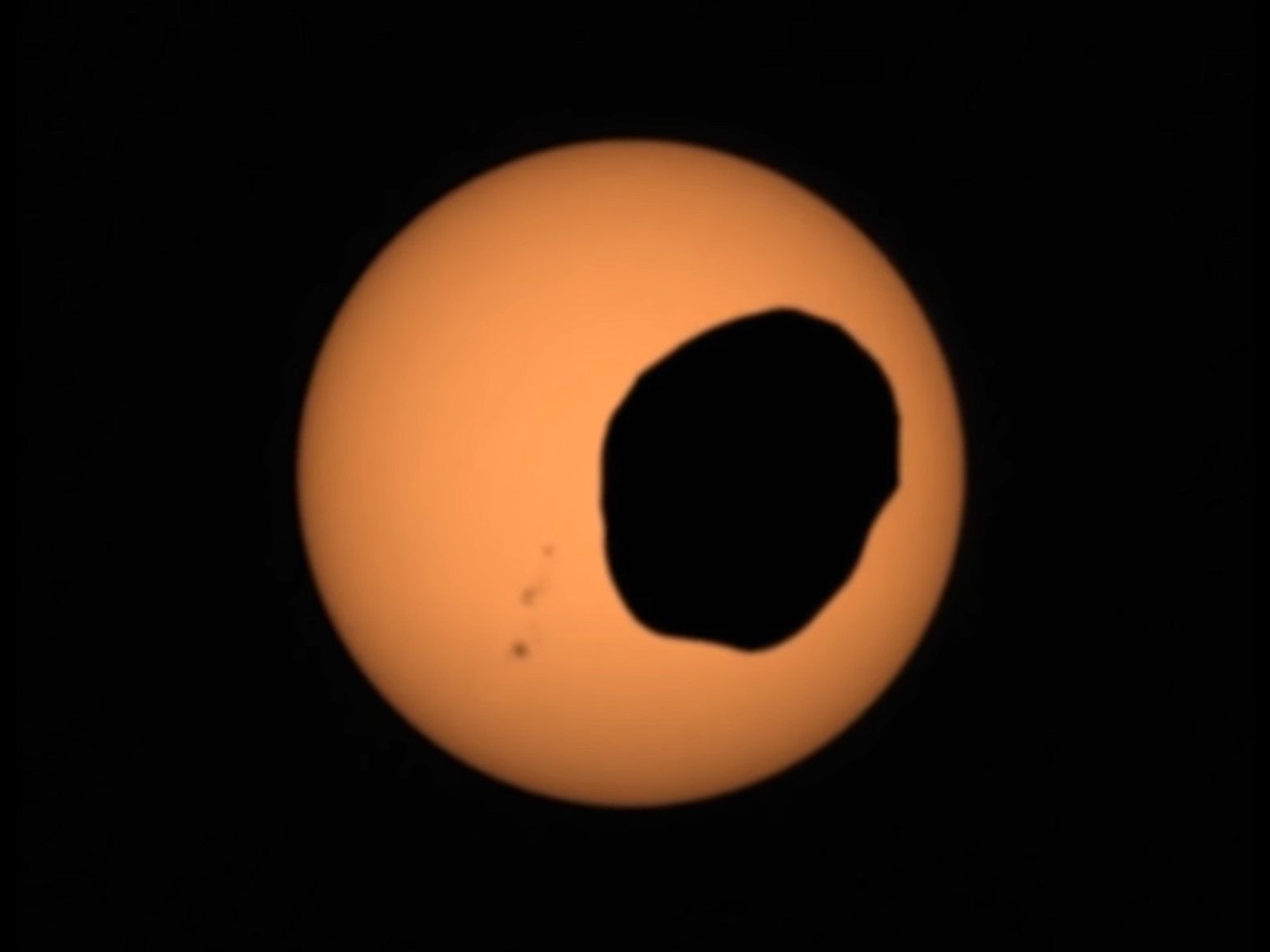Mars discovery reveals the planet’s secrets

Your support helps us to tell the story
From reproductive rights to climate change to Big Tech, The Independent is on the ground when the story is developing. Whether it's investigating the financials of Elon Musk's pro-Trump PAC or producing our latest documentary, 'The A Word', which shines a light on the American women fighting for reproductive rights, we know how important it is to parse out the facts from the messaging.
At such a critical moment in US history, we need reporters on the ground. Your donation allows us to keep sending journalists to speak to both sides of the story.
The Independent is trusted by Americans across the entire political spectrum. And unlike many other quality news outlets, we choose not to lock Americans out of our reporting and analysis with paywalls. We believe quality journalism should be available to everyone, paid for by those who can afford it.
Your support makes all the difference.Mars might have been hit by its own “dinosaur killer” asteroid that caused a mega-tsunami, according to scientists.
An asteroid strike, similar to the Chicxulub impact that wiped out many of the dinosaurs on Earth 66 million years ago – hit the planet in a shallow ocean region and caused water to sweep across the planet.
Past research proposed an asteroid or comet impact within an ocean in the Martian northern lowlands may have caused a mega-tsunami approximately 3.4 billion years ago.
However, before the new study the location of the crater caused by the impact was unclear.
Alexis Rodriguez at the Planetary Science Institute, Tucson, America, and colleagues, analysed maps of the red planet’s surface, created by combining images from previous missions to the planet.
They identified an impact crater that could have caused the mega- tsunami - a giant wave.
The crater - which they have named Pohl - is 110 kilometres in diameter.
It is located within an area of the northern lowlands that previous studies have suggested may have been covered by an ocean, in a region some 120 metres below its proposed sea level.
According to the researchers, based on Pohl’s position it may have formed around 3.4 billion years ago, based on its position above and below rocks previously dated to this time.
The authors simulated asteroid and comet collisions with this region to test what type of impact could have created Pohl, and whether this could have led to a mega-tsunami.
Simulations that formed craters with similar dimensions to Pohl were caused by either a nine kilometre asteroid encountering strong ground resistance - releasing 13 million megatons of TNT energy - or a three kilometre asteroid encountering weak ground resistance - releasing 0.5 million megatons of TNT energy.
The amount of energy released by the most powerful nuclear bomb ever tested was approximately 57 megatons of TNT energy.
Both of the impacts that were simulated formed craters measuring 110 kilometres in diameter and generated mega-tsunamis that reached as far as 1,500 kilometres from the centre of the impact site.
Analysis of the mega-tsunami caused by the three kilometre asteroid impact, suggested the tsunami may have measured up to approximately 250 metres tall on land.
According to the researchers, the aftermath of the proposed Pohl impact may have had similarities with the Chicxulub impact on Earth.
Writing in the Scientific Reports journal, the researchers say: “The site’s location along a highland-facing lobe aligned to erosional grooves supports a mega-tsunami origin.”
They add: “Our findings allow that rocks and soil salts at the landing site are of marine origin, inviting the scientific reconsideration of information gathered from the first in-situ measurements on Mars.”
The findings are reported in a new article, ‘Evidence of an oceanic impact and megatsunami sedimentation in Chryse Planitia, Mars’, published in Scientific Reports.
Additional reporting by Press Association
Join our commenting forum
Join thought-provoking conversations, follow other Independent readers and see their replies
Comments